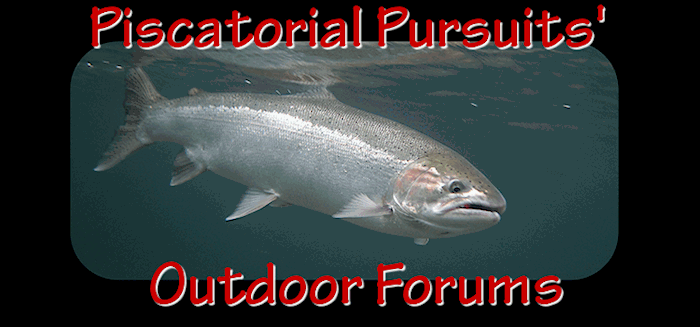What a positive report. Not one word about Washington Trout!

Looks like hatchery reform is going forward as it had been before WT chose to stir the pot, go to court and waste valuable time and money that could have been spent moving forward as this article outlines:
Outdoors
Notebook: Changes seem likely for salmon hatcheries
By Mark Yuasa
Seattle Times staff reporter
E-mail this article
Print this article
Search web archive
In the near future, some Washington salmon hatcheries are expected to get a thorough facelift.
The Hatchery Scientific Review Group (HSRG) released a report recently that lays the groundwork for implementing a comprehensive, systematic and scientific redesign of salmon hatcheries in Puget Sound and coastal Washington.
By focusing on watershed conservation and fisheries goals, scientific defensibility and adaptive management, the recommendations redefine how hatchery programs will be designed, operated and evaluated.
Members include Gov. Gary Locke, U.S. Rep. Norm Dicks (D-Wash.); Northwest Indian Fisheries Commission Chair Billy Frank, Jr.; NOAA Fisheries Regional Administrator Bob Lohn; and state Fish and Wildlife Director Jeff Koenings.
"Hatcheries should be viewed as only one of several tools available for recovering depressed populations and providing fisheries," said HSRG Chairman Lars Mobrand. "They should be used for these purposes only when the benefits outweigh the risks."
Mobrand added that the keys to successful hatchery reform include operating hatchery programs based on clear regional goals and institutionalizing a process of continued monitoring and assessment that informs decision-making.
"My agency has the dual responsibilities of conserving wild salmon and supporting sustainable fisheries," said Jeff Koenings, Director of state Fish and Wildlife. "Hatcheries play a critical role in both arenas, and the HSRG is providing the scientific framework for their operation."
The group divided Puget Sound and the coast into 10 regions, providing an unprecedented opportunity to make region-by-region recommendations based on regional-management goals for conservation and harvest, and on stock and habitat health.
The reviews included a consideration of each hatchery program's effects on all hatchery and naturally spawning salmonid stocks in the region.
Congressman Dicks and Governor Locke have taken the lead to secure funding for both the recommendations and implementation phases of the Hatchery Reform Project.
"Salmon fishing provides $1 billion annually to our state's economy," Dicks said. "One of the things I admire most about this effort is that it seeks to make our fisheries sustainable while protecting and helping to recover wild salmon."
Copies of the report are available at
www.longlivethekings.org














 Previous Topic
Previous Topic Index
Index

